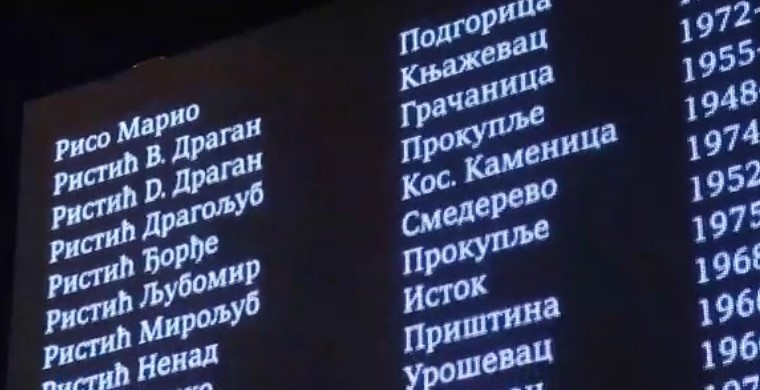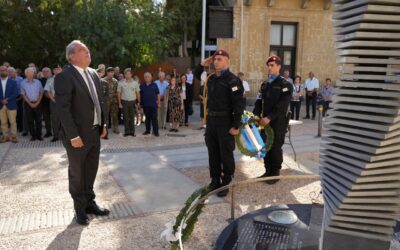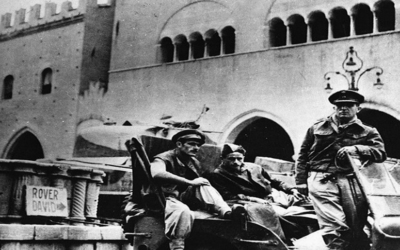The Minister of Defence of the Republic of Cyprus, Mr. Vassilis Palmas, attended the annual commemoration of the fallen of the 3rd…

It has been 25 years since the start of the NATO air operation against the Federal Republic of Yugoslavia, which became known as Operation Allied Force.
On Sunday night, thousands of citizens gathered at the ruins of the former Headquarters of the Army in Belgrade – the building was severely damaged during air raids and the ruins were preserved as a memorial.
According to Euronews, some of the demonstrators held banners that read “When the army returns to Kosovo”, while others waved Russian flags, some with the symbol “Z”.
Earlier on Sunday, several Serbian cities held memorial services and tributes to the victims of the air strikes. In Belgrade, politicians, military, and foreign diplomats laid wreaths at a memorial for the child victims of the bombings.
A year after the start of the Kosovo War, marred by many serious war crimes, the official cause of Operation Allied Force was Serbia’s refusal to sign the Rambouillet Agreement – a plan that called for a complete Serbian withdrawal from Kosovo.
NATO decided to launch the operation without UN approval – as it was expected that China and Russia would veto any such UNSC decision anyway. This has since sparked debates about the legality of NATO’s actions.
The bombing began on March 24, 1999. The Serbian side claims that in addition to military and infrastructure targets, NATO bombed purely civilian places such as hospitals. The exact number of victims is not yet known. Various sources give very different estimates, from several hundred to several thousand civilians killed.
The operation officially ended on June 10, 1999, one day after the signing of the Kumanovo Agreement, which entailed the full withdrawal of Yugoslavia and Serbia from Kosovo and eventually led to the Republic’s full, if partially recognized, independence.
Also read: Serbia – Kosovo | Agreement on the European peace plan
READ MORE
120 years since the death of Pavlos Melas—The Hero of the Macedonian Struggle—Photos
The Armed Forces honor the memory of the ethnic martyr who gave his life for the liberation of Macedonia…
80 years since the Battle of Rimini – The Brigade that wrote golden pages of history
The “Rimini Brigade” wrote new pages of history for Greece, placing it in the camp of the winners. This success was linked to hope and…
Greece | PDPA’s “yes” to Placing Police Cameras on the Streets
The Personal Data Protection Authority gave the green light to the Hellenic Police’s placement of cameras on the streets to prevent and…
MBDA | Modernising TAURUS Missiles for the Bundeswehr
The Bundeswehr and TAURUS Systems GmbH (a joint venture between MBDA and SAAB) have signed a contract for the maintenance and…
USA | The leader of the Islamic State was killed in an airstrike in Syria
The US military announced midday Friday that it had killed ISIS leader Abu Yusuf in an airstrike in Deir ez-Zor province.
THEON INTERNATIONAL | German parliament approves the exercise of the 3rd option of the OCCAR Night Vision contract
Theon International Plc (THEON) announces that the Defence and Budget Committees of the German Parliament approved yesterday a new…
BATTLEFIELD ReDEFiNED 2024 | The premier Defence and Security Conference Successfully Concludes in Cyprus – Photos
The International Defence and Security Conference “BATTLEFIELD ReDEFiNED 2024” was successfully concluded on Friday, 13, December 2024…
Dark Eagle | Successful Test of Hypersonic Missile by the US Army
The US Army has successfully conducted a test launch of its new hypersonic missile system, “Dark Eagle,” after two years of delays.






















